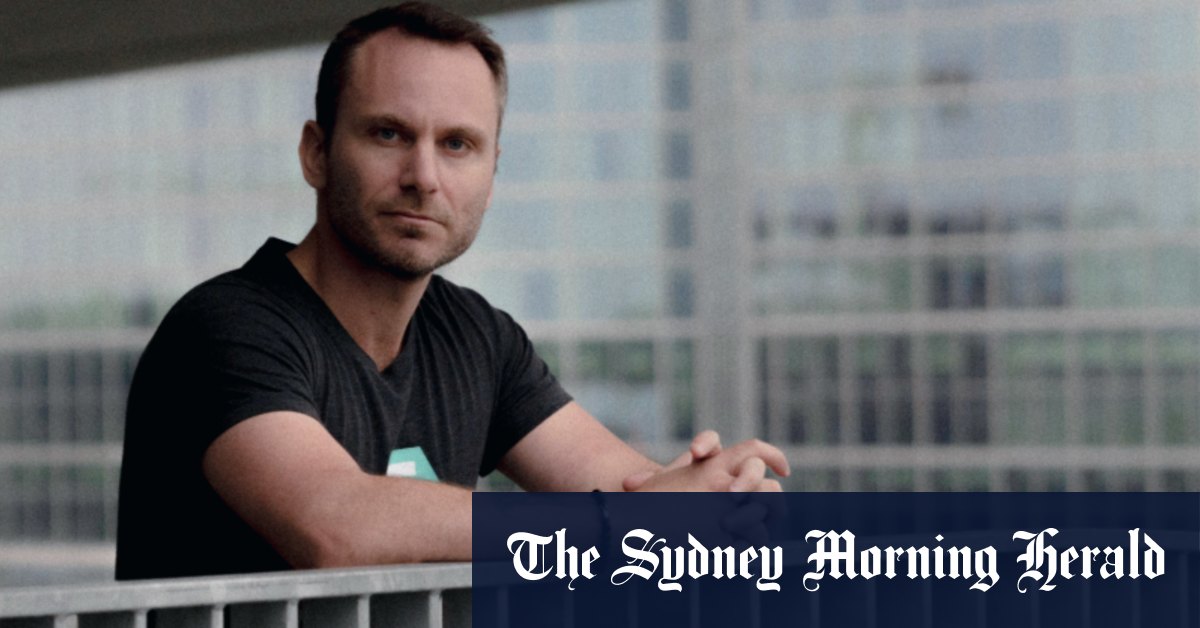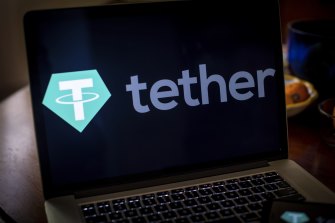
The coin that could wreck crypto
Critics say Tether essentially acts as a loosely regulated bank. Traders hand over millions of dollars and, in return, receive millions of stablecoins, which they use to bet on more volatile cryptocurrencies such as Bitcoin or Dogecoin. Tether currently has 70 billion coins in circulation, making it more than three times the size of TerraUSD before the crash.
In a worst-case scenario, critics say, a downturn could spark the crypto equivalent of a bank run. Traders might all rush to exchange their Tethers for dollars, only to discover that Tether could not fulfill those orders. Investors would lose billions of dollars, forcing them to sell their other crypto holdings, causing a potentially devastating panic that might spill into non-crypto markets.
Tether got a taste of that scenario last month. As cryptocurrencies plummeted, a flood of investors asked to exchange their Tethers for dollars, forcing the company to pay out about an eighth of its reserves, or $US10 billion, over the course of a week and a half. On cryptocurrency exchanges, Tether briefly wavered from its $US1 peg.

Long one of the most scrutinised companies in the industry, Tether is facing heightened pressure from regulators, investors, economists and growing legions of sceptics, who argue it could be another domino to fall in an even bigger crash.Credit:Bloomberg
Ultimately, the company said, it met the demand. Tether went on a victory lap, proclaiming it had weathered the crisis “flawlessly.”
The crash was “the best story that could have happened to Tether,” Paolo Ardoino, the company’s chief technology officer, said in an interview. “We’re not fooling around, and we take risk management extremely seriously.”
Then last week, the crypto bank Celsius Network announced it was halting withdrawals, causing digital currency prices to crash again. Tether had invested in Celsius in 2020 and lent it about $US1 billion in Tethers, according to Bloomberg News; the company said this week that it currently had “zero exposure” to Celsius apart from a small investment. Still, as the market reeled, investors pulled out about $US1.6 billion from Tether.
Loading
More sceptics are speaking up. Last month, a top US banking official called for new rules governing Tether and its competitors, saying the TerraUSD crash highlighted the risks of loosely regulated stablecoins. Some traders are now putting their funds into alternate stablecoins, amid fears that the next crash could test whether Tether has adequate reserves.
“They had enough collateral to weather this run, but that doesn’t mean they have enough to weather the next run,” said Bruce Mizrach, an economics professor at Rutgers University who studies cryptocurrencies.
Even by crypto’s often-surreal standards, Tether has a peculiar history. The company was founded in 2014 by Brock Pierce, a cryptocurrency evangelist who, as a child actor, starred in the Mighty Ducks movies. He and his partner, Reeve Collins, later handed control of the firm to a former plastic surgeon named Giancarlo Devasini, who has stored some of Tether’s assets in a bank in the Bahamas run by one of the creators of the Inspector Gadget cartoon.
Tether has grown rapidly. Last year, it issued roughly 50 billion stablecoins, more than tripling the worldwide supply. “If we have to redeem till the last cent, we can do it,” Ardoino said in the interview.
The company is operated by about 50 employees in Europe, Asia and Latin America. Its CEO, JL van der Velde, is a Dutch businessman whose LinkedIn profile suggests he is based in Hong Kong; the company declined to confirm his location. He and Devasini, the chief operating officer, rarely speak publicly. Tether’s public face is Ardoino, who describes his colleagues as “normal people” amazed by the company’s growth.

Tether was founded by Brock Pierce in 2014.Credit:Getty Images
“They didn’t think initially that it would maybe go so big,” Ardoino said. “They weren’t prepared to be public persons. There’s nothing bad about it.”
At times, Tether has insisted that its stablecoins were fully backed by US dollars. But last year, New York Attorney General Letitia James called those claims “a lie.”
A few years earlier, a cryptocurrency exchange affiliated with Tether had lost $US850 million in a business deal gone sour. To cover the losses, the exchange, Bitfinex, took loans from Tether’s reserves, leaving the stablecoin partly unbacked, according to James’ investigation.
Tether settled with the New York attorney general, paying $US18.5 million in penalties without admitting wrongdoing. A Tether spokesperson said the issue with the company’s reserves boiled down to a “communications misstep.”
“Tether is really the lifeblood of the crypto ecosystem. f it imploded, then the entire facade falls down.”
Hilary Allen, a finance expert at American University.
Concerns about Tether have spread to Washington. When Treasury Secretary Janet Yellen testified before Congress last month, she noted Tether’s wavering from its $US1 peg and called for greater regulation of stablecoins.
The growth of stablecoins presents “the same kind of risks that we have known for centuries in connection with bank runs,” she said.
Ardoino said Tether was eager to work with regulators to devise a global framework governing disclosures that stablecoin issuers must make about their reserves. But Tether has resisted more aggressive proposals, which would subject it to regulatory requirements such as those of traditional banks.
Loading
“Everyone’s freaking out — like, ‘I lost my life savings,’” said Collins, who founded Tether with Pierce and now runs a crypto venture called BLOCKv. “That’s a tragedy, but it’s just as much of a tragedy when someone says, ‘I went to a casino and lost my life savings.’ But that doesn’t mean let’s regulate casinos out of existence.”
This article originally appeared in The New York Times.
Stay connected with us on social media platform for instant update click here to join our Twitter, & Facebook
We are now on Telegram. Click here to join our channel (@TechiUpdate) and stay updated with the latest Technology headlines.
For all the latest Education News Click Here
For the latest news and updates, follow us on Google News.

